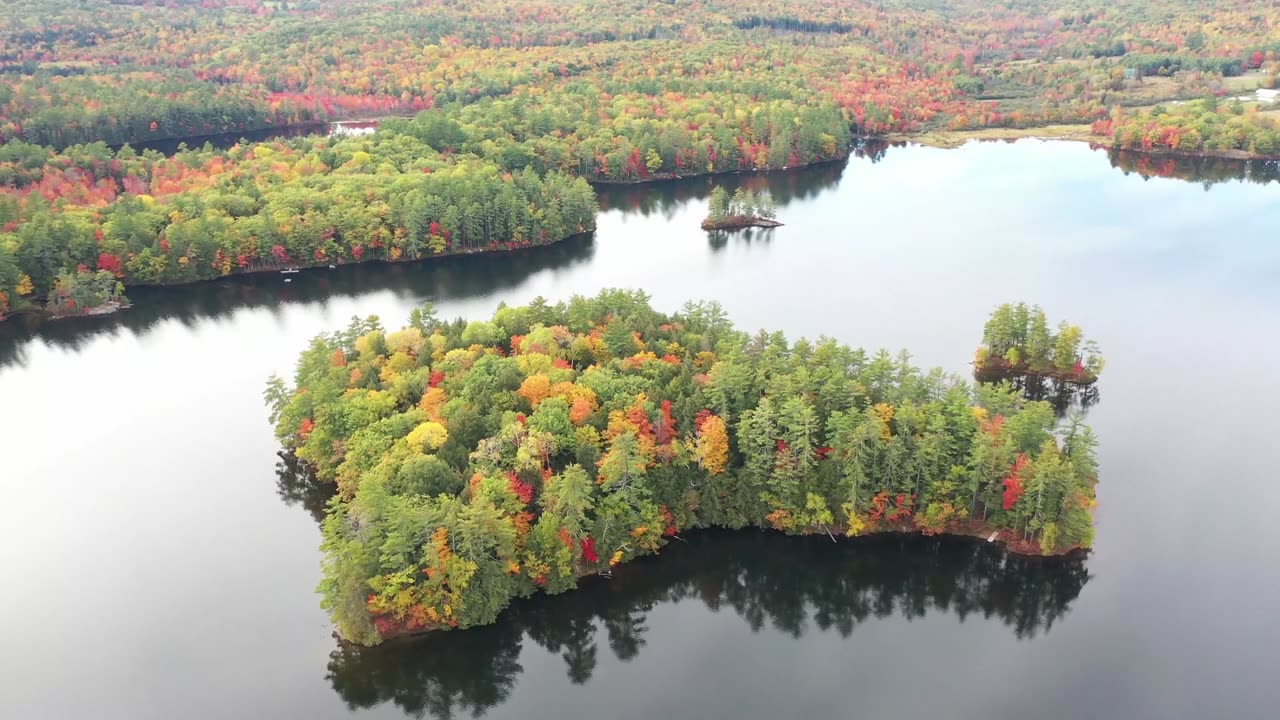Premium Only Content

Changing Colors Of The Tree Leaves In Autumn
The changing colors of tree leaves in autumn are a spectacular natural phenomenon, marked by a vibrant display of hues ranging from green to various shades of red, orange, yellow, and brown. This process, known as autumn leaf coloration, is a result of several intricate biological and environmental factors.
Chlorophyll Breakdown:
In the spring and summer, leaves appear green due to chlorophyll, the pigment responsible for photosynthesis. As daylight decreases and temperatures drop in the fall, chlorophyll production slows down and eventually ceases. The breakdown of chlorophyll reveals other pigments present in the leaves.
Anthocyanins, Carotenoids, and Xanthophylls:
Anthocyanins: These pigments produce red, purple, and blue colors. They are produced in response to certain environmental factors like sunlight and temperature changes.
Carotenoids: Responsible for yellow and orange hues. Carotenoids are always present in leaves but become more visible when chlorophyll breaks down.
Xanthophylls: These pigments contribute to yellow colors. Similar to carotenoids, they are always present but become more noticeable in the absence of chlorophyll.
Environmental Factors:
Daylength: Shorter days and longer nights trigger physiological changes in trees, signaling the onset of autumn.
Temperature: Cool nights and sunny days enhance the production of red and purple pigments.
Moisture: A lack of moisture or drought stress can intensify autumn colors, as it affects the balance of pigments in the leaves.
Tree Species:
Different tree species exhibit different colors during autumn. For example, maples often turn brilliant red, while oaks and hickories tend to display more muted reds and browns.
Geographic Location:
The timing and intensity of autumn leaf colors can vary based on geographic location. Higher latitudes and elevations often experience earlier and more vibrant displays.
Observing the changing colors of tree leaves in autumn is a breathtaking experience, attracting tourists and providing a sense of natural wonder. It serves as a visual reminder of the cyclical nature of seasons and the intricate interplay between environmental cues and biological processes in the plant world.
-
 DVR
DVR
Josh Pate's College Football Show
6 hours ago $0.77 earnedCFP Reaction Special | Early Quarterfinal Thoughts | Transfer Portal Intel | Fixing The Playoff
4.54K -
 23:55
23:55
CartierFamily
3 days agoElon & Vivek TRIGGER Congress as DOGE SHUTS DOWN Government
54.7K74 -
 5:43:44
5:43:44
Scammer Payback
2 days agoCalling Scammers Live
141K21 -
 18:38
18:38
VSiNLive
2 days agoProfessional Gambler Steve Fezzik LOVES this UNDERVALUED Point Spread!
104K17 -
 LIVE
LIVE
Right Side Broadcasting Network
10 days agoLIVE REPLAY: President Donald J. Trump Keynotes TPUSA’s AmFest 2024 Conference - 12/22/24
5,084 watching -
 4:31
4:31
CoachTY
1 day ago $27.59 earnedCOINBASE AND DESCI !!!!
147K11 -
 10:02
10:02
MichaelBisping
23 hours agoBISPING: "Was FURY ROBBED?!" | Oleksandr Usyk vs Tyson Fury 2 INSTANT REACTION
76.8K13 -
 8:08
8:08
Guns & Gadgets 2nd Amendment News
2 days ago16 States Join Forces To Sue Firearm Manufacturers Out of Business - 1st Target = GLOCK
104K87 -
 10:17
10:17
Dermatologist Dr. Dustin Portela
2 days ago $18.00 earnedOlay Cleansing Melts: Dermatologist's Honest Review
143K14 -
 1:02:20
1:02:20
Trumpet Daily
2 days ago $45.83 earnedObama’s Fake World Comes Crashing Down - Trumpet Daily | Dec. 20, 2024
99.9K67